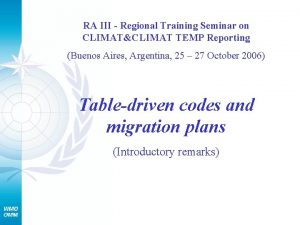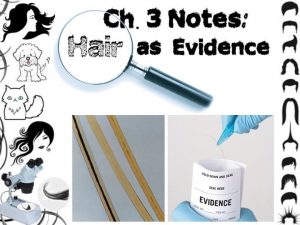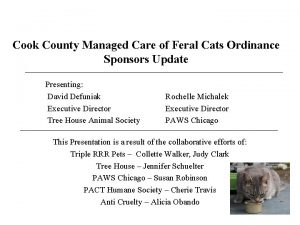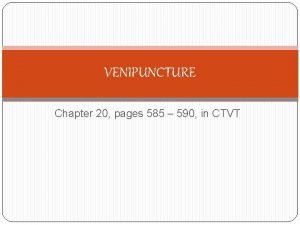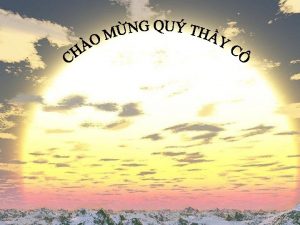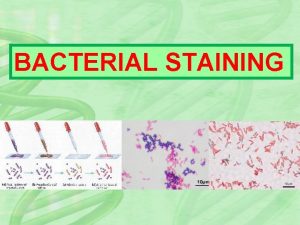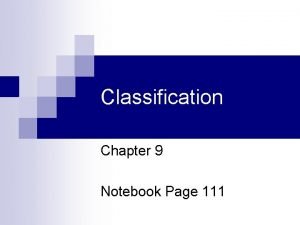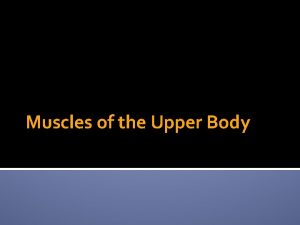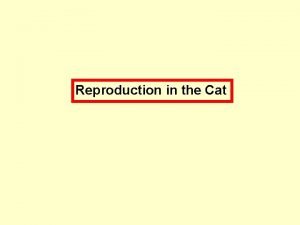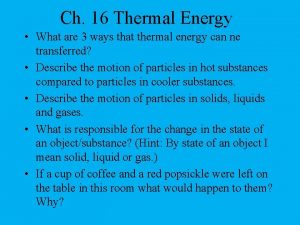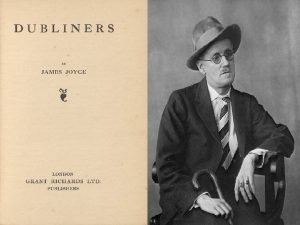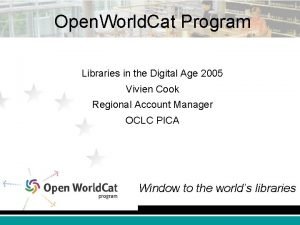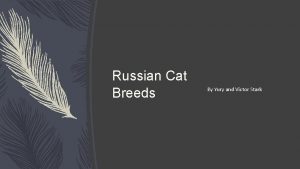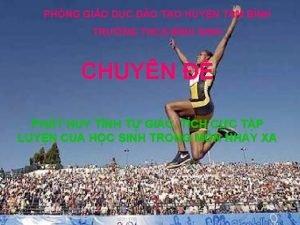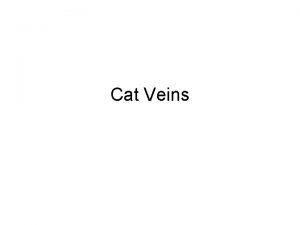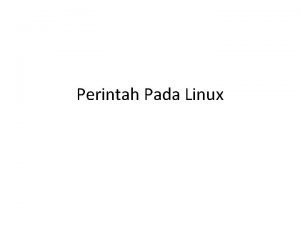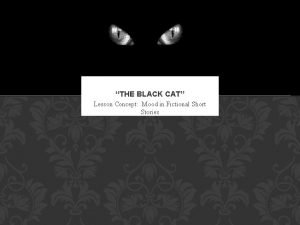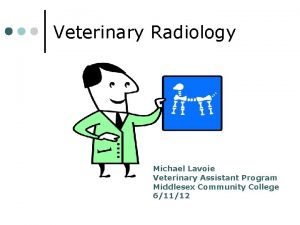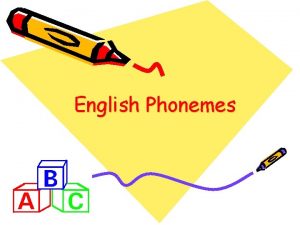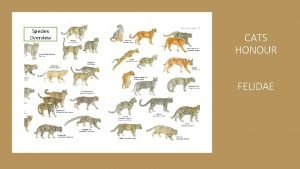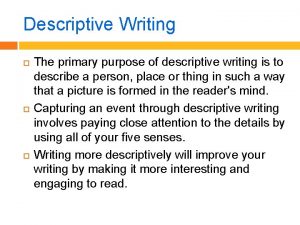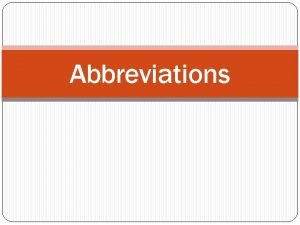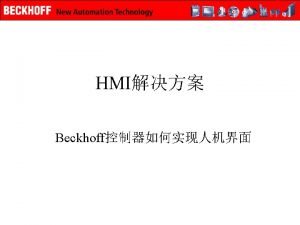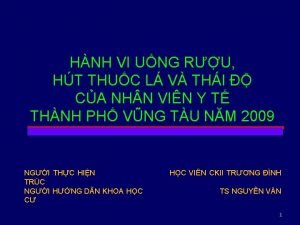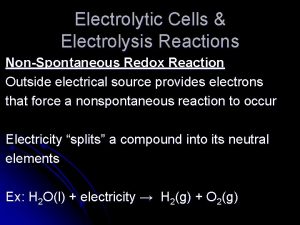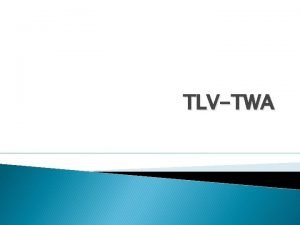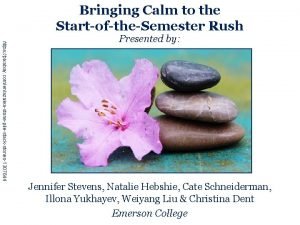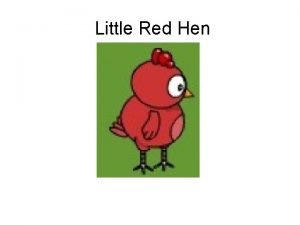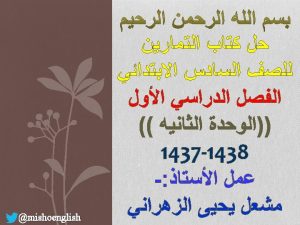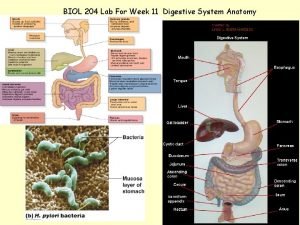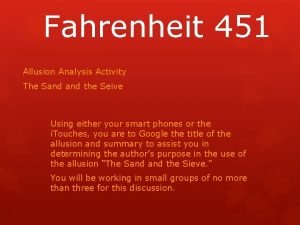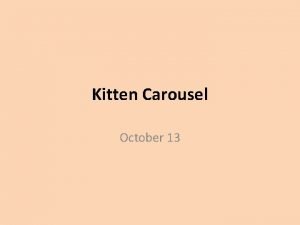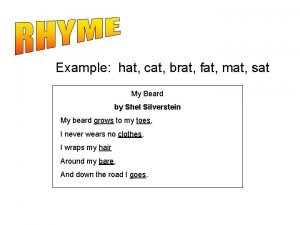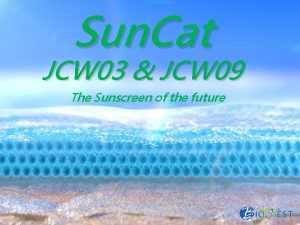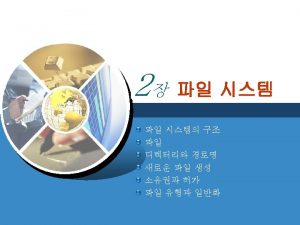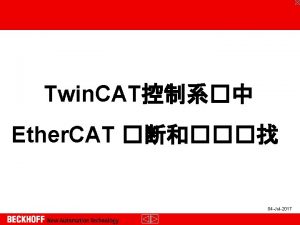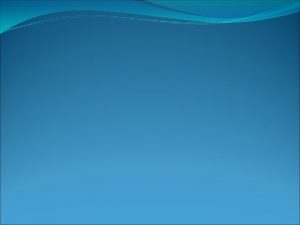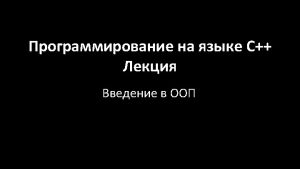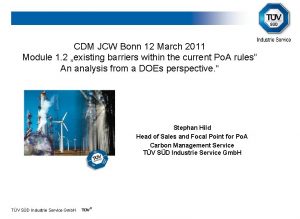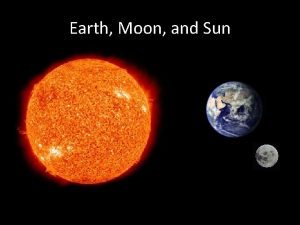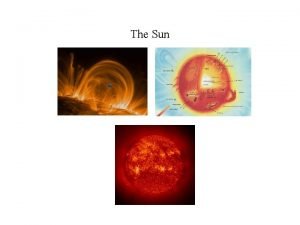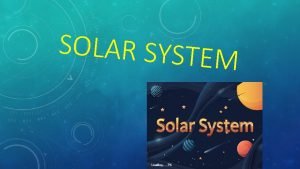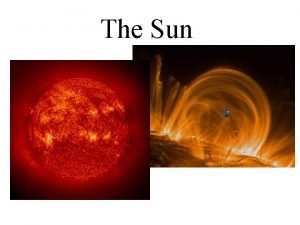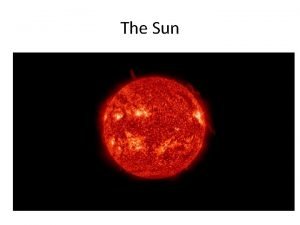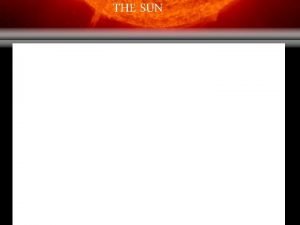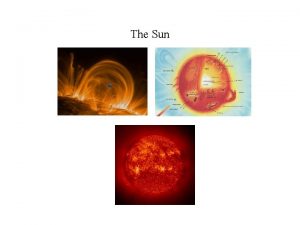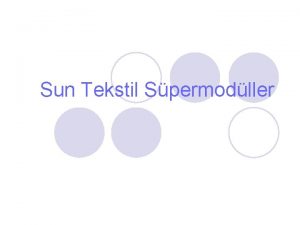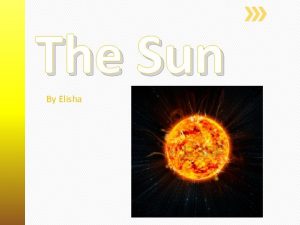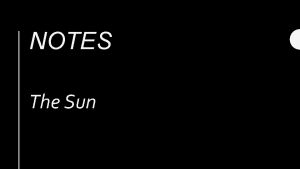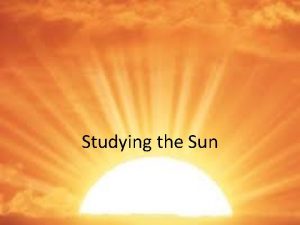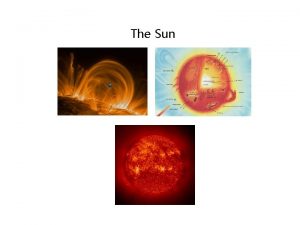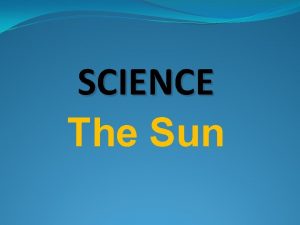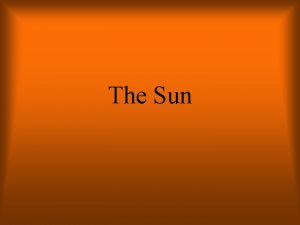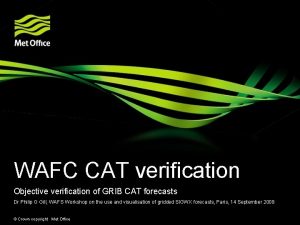Sun Cat JCW 03 JCW 09 Sun Cat












































- Slides: 44

Sun. Cat JCW 03 & JCW 09 Sun. Cat The Sunscreen of the future

Ultra violet radiation % Reaching Ground 95% 5% UVA UVB Causes Aging Causes Burning & Tanning 12 BOOTS STAR SYSTEM SUN PROTECTION FACTOR (SPF) UVC Blocked by Atmosphere

Gene Protein Healthy DNA ROS UV Gene Protein Damaged DNA Healthy DNA comes healthy skin!!

Statistics of Melanoma Cases in U. S. Figure 1. Age-adjusted incidence of melanoma by race and gender; SEER data, 1973– 1998. Source: National Cancer Institute

Types of UV filters

Chemical vs Physical - Advantages • Chemical – Well understood by formulators. – Low concentrations can give good efficacy. – Good skin feel with no powdery appearance. • Physical – Broad spectrum and photo-stable. – Safe and low irritancy. – No need to use more than one active to gain high SPF. – Once dispersed are easy to incorporate into finished product.

Chemical vs Physical - Disadvantages • Chemical – Most are narrow spectrum and some are not photostable. – Usually need to mix to get broad spectrum and high SPF. – Questions over irritancy and impact on environment. • Physical – Can be difficult to formulate with if not pre -dispersed. – Can leave skin appearing white and if not formulated carefully give poor skin feel. – Questions over nano particles, do they absorb into skin?

Common Problems in Sunscreens

Concerns & Inconvinience of Sunscreens • Tend to feel oily, sticky and heavy Ø Oil type formulation, especially the high SPF products. • Chemical sunscreens can cause skin irritation Ø Especially to skin-sensitive people. • Chemical sunscreens can penetrate the skin Ø Oil type formulation helps penetration. • Normally need to reapply every two hours Ø Need to reapply when sun protection ability reduce to below 70 %.

Concerns & Inconvinience of Sunscreens • Difficult to wash off Ø Oil type formulation usually difficult to wash off by surfactants. • Selection and storage of multiple sunscreen APIs Ø Combination of multiple APIs to achieve broad spectrum protection. Ø The chosen APIs has to compatible with other raw materials. Ø Have to stock several APIs for different formulation. • Limited O/W formulation type Ø O/W formulation leads to oily and sticky, uncomfortable to wear.

Concerns & Inconvinience of Sunscreens • Not easy to stabilize the emulsifying system Ø APIs has to emulsify, including liquid and solid APIs & stability of emulsifying system related to the stability of end product. • Guesswork needed to achieve desired SPF Ø The usage of APIs usually is not linear relation with SPF. Ø Increasing API usage sometimes will not increase SPF, even will reduce SPF. Ø To spend a very long time to design and test the efficiency of the formulation

Concerns & Inconvinience of Sunscreens • Excess sunscreen APIs used The highest SPF usually is when the formulation finished. Excess usage of APIs to provide a safety margin for the SPF. • Aggregation of sunscreen APIs

Aggregation & Absorption

Sun. Cat Encapsulation

Unique Technology • Pre-solubilized mixture of both liquid and powder chemical sunscreen • Through a proprietary, high pressure, and high shear process • Micronized sunscreen enwrapped in doublelayered sphere • Negatively charged outer sphere • Prevent aggregation

Formulating with Sun. Cat Advantages • • • No need to solubilize before adding No need to use additional emulsifiers Negligible effect on viscosity of product No need to use complicated UV filter blend Easy to work out requirements for given SPF Low usage compared to other similar products • Low cost in use compared to other similar products • Easily added

Cream Formula

2. 5 2 UVB UVAII Value (ABS) EHMC 1. 5 HMS OCR BMBM 1 BP-3 BEMT EHT 0. 5 DHHB 0 290 300 310 320 330 340 350 360 370 380 390 400 Wavelength (nm) Ø Ø EHMC: Ethylhexyl methoxycinnamate HMS: Homosalate OCR: Octocrylene BMBM: Butyl methoxydibenzoylmethane Ø Ø BP 3: Benzophenone-3 BEMT: Bis-Ethylhexyloxyphenol Methoxyphenyl Triazine (Tinosorb® S) EHT: Ethylhexyl Triazone (Uvinul® T 150) DHHB: Diethylamino Hydroxybenzoyl Hexyl Benzoate (Uvinul® A Plus) Note: All UV spectra are obtained with conc. of 10 ppm in ethanol except for BEMT (in C 12 -15 Alkyl benzoate)

New UV filters in Sun. Cat M. W. 397. 5 Uvinul® A Plus

Composition Sun Cat JCW 03 (INCI) Name CAS No. EINECS/ELINCS# Amount, W% Water 7732 -18 -5 231 -791 -2 35. 9 C 12 -15 Alkyl Benzoate 68411 -27 -8 270 -112 -4 20 Diethylamino Hydroxybenzoyl Hexyl Benzoate (Uvinul A Plus, VI/28) 302776 -68 -7 443 -860 -6 15 Ethylhexyl Triazone (Uvinul T 150, VI/15) 88122 -99 -0 402 -070 -1 10 Bis-Ethylhexyloxyphenol Methoxyphenyl Triazine (Tinosorb S, VI/25) 187393 -00 -6 --- - 5 Propanediol 504 -63 -2 207 -997 -3 10 Phenoxyethanol (V/29) 122 -99 -6 204 -589 -7 0. 7 Hydroxyacetophenone 99 -93 -4 202 -8 0. 4 Lecithin 8002 -43 -5 232 -307 -2 3

Composition Sun Cat JCW 09 (INCI) Name CAS No. EINECS/ELINCS# Amount, W% Water 7732 -18 -5 231 -791 -2 35. 9 C 12 -15 Alkyl Benzoate 68411 -27 -8 270 -112 -4 20 Diethylamino Hydroxybenzoyl Hexyl Benzoate (Uvinul A Plus, VI/28) 302776 -68 -7 443 -860 -6 10 Ethylhexyl Triazone (Uvinul T 150, VI/15) 88122 -99 -0 402 -070 -1 10 Butyl Methoxydibenzoylmethane (Avobenzone, VI/8) 70356 -09 -1 274 -581 -6 10 Propanediol 504 -63 -2 207 -997 -3 10 Phenoxyethanol (V/29) 122 -99 -6 204 -589 -7 0. 7 Hydroxyacetophenone 99 -93 -4 202 -8 0. 4 Lecithin 8002 -43 -5 232 -307 -2 3

SPF 50+ Example from BASF

In vitro SPF JCW 03 0% 3% 5% 8% 10% 13% 15% 17% 20% UV filters % 0% 0. 9% 1. 5% 2. 4% 3% 3. 9% 4. 5% 5. 1% 6% Cream Base 1. 63 11. 33 16. 35 23. 66 27. 81 31. 41 32. 2 37. 48 38. 68 Cream base + 3%Ti. O 2 (ST-2000) 4. 88 44. 85 56. 8 66. 78 68. 73 71. 89 71. 97 78. 03 73. 78 JCW 09 0% 3% 5% 8% 10% 13% 15% 17% 20% UV filters % 0% 0. 9% 1. 5% 2. 4% 3% 3. 9% 4. 5% 5. 1% 6% Cream Base 1. 63 22. 09 28. 42 35. 3 36. 71 40. 55 43. 35 46. 7 50. 77 Cream base + 3%Ti. O 2 (ST-2000) 4. 88 56. 22 66. 48 70. 22 72. 34 75. 72 75. 93 80. 84 84. 5

In vitro SPF JCW 03 20% 23% 25% 27% 30% UV filters % 6% 6. 9% 7. 5% 8. 1% 9% Cream Base 38. 68 39. 81 45. 55 49. 18 57. 94 JCW 09 20% 23% 25% 27% 30% UV filters % 6% 6. 9% 7. 5% 8. 1% 9% Cream Base 48. 09 50. 28 52. 39 54. 4 59. 52

In Vivo & In Vitro (SPF) Sun. Cat JCW 03 Cream Base Cream + Ti. O 2 W% 15% 3% In Vitro SPF 32. 2 44. 85 In Vivo SPF 41. 6 64. 8 Sun. Cat JCW 09 Cream Base Cream + Ti. O 2 15% 3% 43. 35 56. 22 41. 6 64. 8 W% In Vitro SPF In Vivo SPF

In Vivo SPF (ISO: 24444)

UV transmission test

Photostability Test JCW 03 Cream Base JCW 09 Sun. Cat, w% 15% 3%+3%ST 2000 SPF, before sun exposure 35. 92 49. 5 41. 41 60. 16 SPF, after 2 hrs exposure 36. 84 52. 6 40. 2 67. 46 SPF, after 4 hrs exposure 36. 38 61. 58 42. 1 56. 82 SPF, after 6 hrs exposure 36. 28 58. 95 42. 09 52. 12 Results: The photostability of Sun. Cat JCW 03&JCW 09 has been proved to effectively provide perfect sun protection even after continuous sun exposure for 6 hours.

In Vitro & In Vivo (UVA) In Vivo UVA JCW 03 (Cream Base) JCW 09 (Cream Base) Sun. Cat, W% 15% In vivo UVA-PF 18. 67 21. 67 PA++++ In Vitro UVA JCW 03 (Cream Base) JCW 09 (Cream Base) Sun. Cat, W% 15% In vitro UVA 20. 3 20. 1 SPF LABEL/UVA PF Ratio 1. 97 1. 99 SPF LABEL/UVA PF Ratio < 3? YES PA rating

In-Vivo UVA Determination – PA Plus Rating for Japan – ISO 24442: 2011 Method

ISO 24443: 2012 UVA method Sun. Cat JCW 09

ISO 24443: 2012 UVA method Sun. Cat JCW 03

Why Sun. Cat? • Non-Irritant • Longer and safer skin residence time • Forms a thin layer of water resistant protective shield upon skin • Even coverage on skin, skin between fine wrinkles is protected • Allows the skin to breathe freely

Why Sun. Cat? • Enwrapped form for even protection • Particles won’t aggregate • Safer on the skin • Won’t get absorbed into the skin • Comfortable and refreshing skin wear

Why Sun. Cat? • Extended broad spectrum protection of UVA+UVB • Easier formulation • Water dispersible • Lower dosage for higher SPF • No guesswork for SPF achieved

Others VS Sun. Cat



Tips formulating • Sun. Cat Must be added at the very last step during formulation process, after: Ø Ø Emulsifying is well done The temperature cools down below 45 Add Sun. Cat Homogenize and mix completely to ensure Sun. Cat is well dispersed ( 3000 rpm is recommended)

Incompatible Ingredients for Sun. Cat • Heavy Metal and Iron (Do not store Sun. Cat in metal container, not even stainless) • Methanol • Aluminum ( all compounds)

Suncat SPF Booster • Nestdry ST-2000 a) Uniform larger particles (200 -500 nm) b) Silicone coated c) Aluminum free Note: Incorporate ST-2000 in oil phase of emulsion

Potential Applications with Sun. Cat • Sun tan lotion • Sun protection spray • Sun protection gel • SPF day cream • Sun protection during sport • Lip balm • • High SPF sunscreen Foundation BB cream Hair gel/Brylcreme Baby care Sunscreen wipe Pet & Animal care Etc…

Sun. Cat Summary

Thank You
 Ils cat 1 minima
Ils cat 1 minima Cat 1 cat 2 cat 3 aviation
Cat 1 cat 2 cat 3 aviation I bought me a cat and the cat pleased me
I bought me a cat and the cat pleased me Pigment granules in hair
Pigment granules in hair Cook county feral cat ordinance
Cook county feral cat ordinance Saphenous vein in animals
Saphenous vein in animals Hình cắt kết hợp
Hình cắt kết hợp Pengecatan flagella
Pengecatan flagella The integumentary system
The integumentary system Taxonomy of cat
Taxonomy of cat Serratus anterior and external oblique
Serratus anterior and external oblique Darn cat motivational interviewing
Darn cat motivational interviewing How cats mate
How cats mate Name an animal seen in the lion king family feud
Name an animal seen in the lion king family feud Which has more thermal energy a tiger or a house cat
Which has more thermal energy a tiger or a house cat A few light taps upon the pane
A few light taps upon the pane Open world cat
Open world cat Russian cat breeds
Russian cat breeds Alternating rhyme
Alternating rhyme Peace train lyrics
Peace train lyrics Các giai đoạn của nhảy xa
Các giai đoạn của nhảy xa George buckley harvard
George buckley harvard Complex sentence examples
Complex sentence examples Left internal iliac artery
Left internal iliac artery Perintah cat pada linux
Perintah cat pada linux Mood of the black cat
Mood of the black cat Middlesex radiology
Middlesex radiology Phonemes of bat
Phonemes of bat The cat crept through the dark house
The cat crept through the dark house Compound complex
Compound complex What is felidae
What is felidae Gregory is my beautiful gray persian cat
Gregory is my beautiful gray persian cat Domestic short haired cat
Domestic short haired cat Plc hmi web
Plc hmi web The cat in the hat conflict
The cat in the hat conflict Phương pháp nghiên cứu cắt ngang
Phương pháp nghiên cứu cắt ngang Nuclear equation
Nuclear equation Passing grade cpns 2021
Passing grade cpns 2021 Pixabay ru
Pixabay ru Not i said the mouse
Not i said the mouse Cat and the mouse
Cat and the mouse Cat
Cat The devil can cite scripture for his purpose fahrenheit 451
The devil can cite scripture for his purpose fahrenheit 451 Cat carousel experiment
Cat carousel experiment Repetition of sounds
Repetition of sounds

